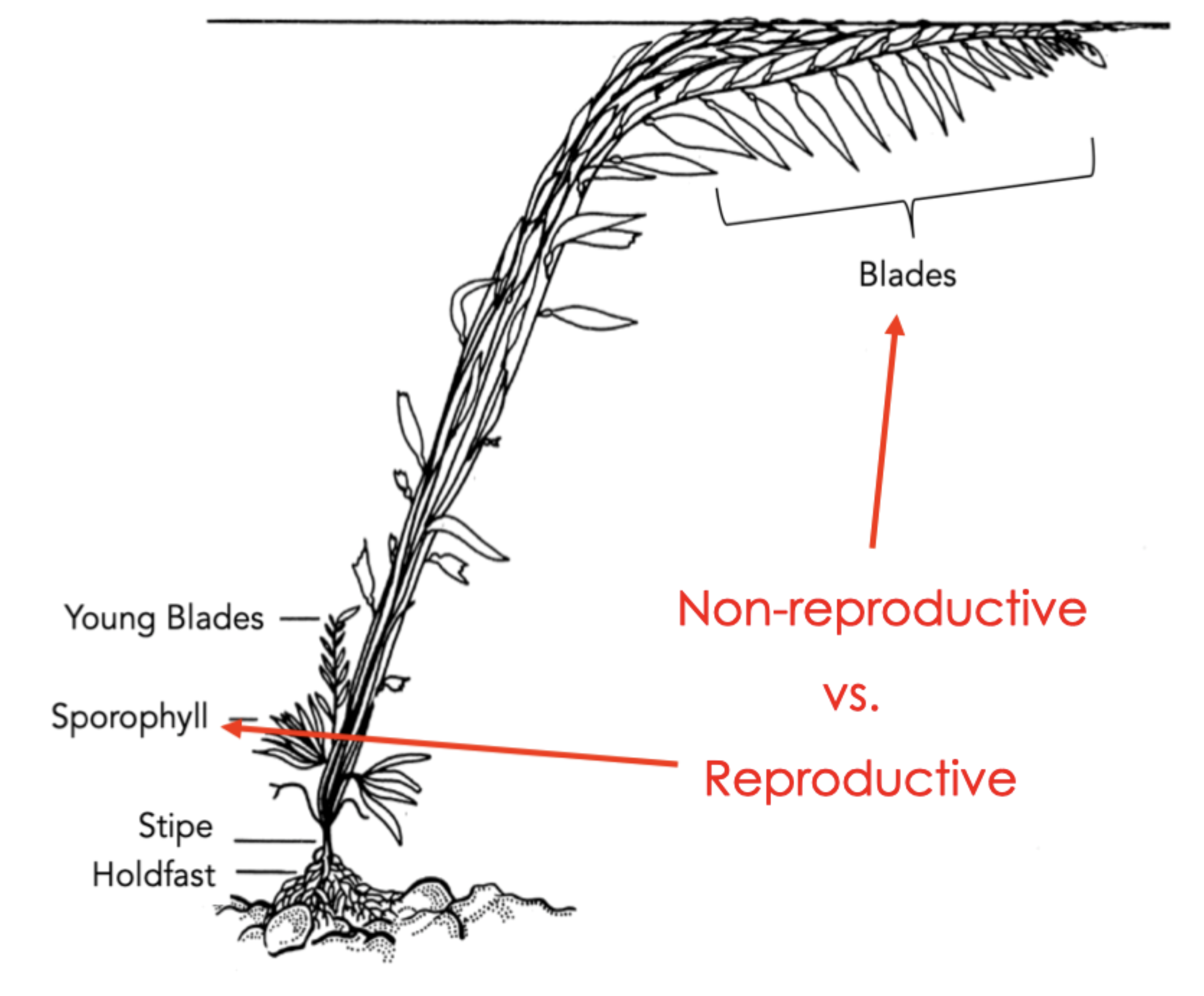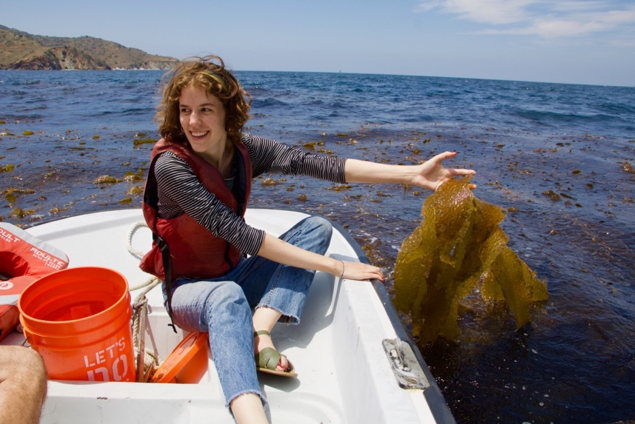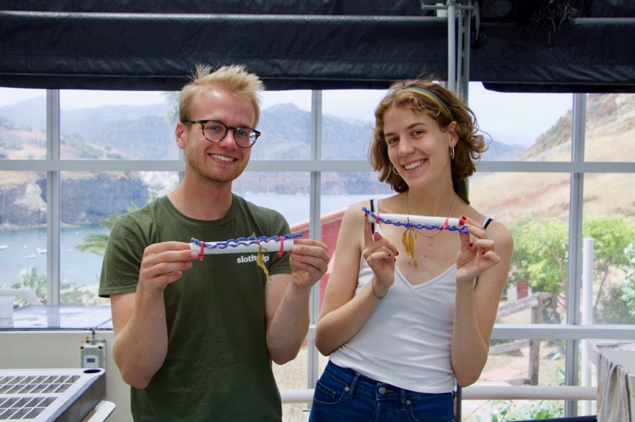By: Kelly DeWeese
Hi! My name is Kelly DeWeese, and I’m a second year graduate student in the Molecular Biology PhD program at USC. I research Macrocystis pyifera (giant kelp) in the Nuzhdin Lab, where we are working toward giant kelp domestication for growth in open ocean aquaculture. In our lab we nickname giant kelp “Kelpie”, like the fearsome Celtic sea monster made out of kelp featured in recent Harry Potter movies:
This summer I was awarded the USC Wrigley Summer Fellowship to do lab work and collect kelp on Catalina. My project is focused on using transcriptomic analyses to learn more about the genes involved in giant kelp reproductive pathways.
Transcriptomics uses data on mRNA (read: gene) expression to analyze which genes are being expressed in different conditions, at different times of day, etc. We are interested in the reproductive pathway because as part of the domestication process, our lab wants to sterilize (i.e. knock out the reproductive pathway of) the kelp that is farmed because it will be growing in the ocean, not in a controlled environment. A transcriptomic analysis that will help us understand the reproductive pathway is a differential expression analysis of both reproductive and nonreproductive giant kelp tissues. Comparing the genes that are differently expressed between each tissue type will highlight some candidate genes involved in reproduction that can be knocked out or selected for in domesticated giant kelp to sterilize the organism.
Most days on the island, my undergrads, Ben and Jean, and I go out and collect sporophyte tissue growing near the ocean’s surface in the morning. Ben drives the boat, and Jean and I take punches of kelp blades and put them on in seawater, on dry ice or in preserving solution for transport back to the lab. Here some labmates and I are taking a Boston whaler to collect giant kelp off the coast of Catalina Island:
 Then, Ben, Jean and I take the giant kelp samples back to the lab for homogenization and extraction of RNA. This summer we worked on optimizing a protocol to extract clean RNA in high concentrations, which is difficult because giant kelp has thick cell walls and cells full of macromolecules that contaminate RNA extractions. Last week, my undergrads presented on their research at the USC Wrigley REU Symposium to wrap up their time out on the island. Thanks for such a great summer and all your hard work, Ben and Jean!
Then, Ben, Jean and I take the giant kelp samples back to the lab for homogenization and extraction of RNA. This summer we worked on optimizing a protocol to extract clean RNA in high concentrations, which is difficult because giant kelp has thick cell walls and cells full of macromolecules that contaminate RNA extractions. Last week, my undergrads presented on their research at the USC Wrigley REU Symposium to wrap up their time out on the island. Thanks for such a great summer and all your hard work, Ben and Jean!





